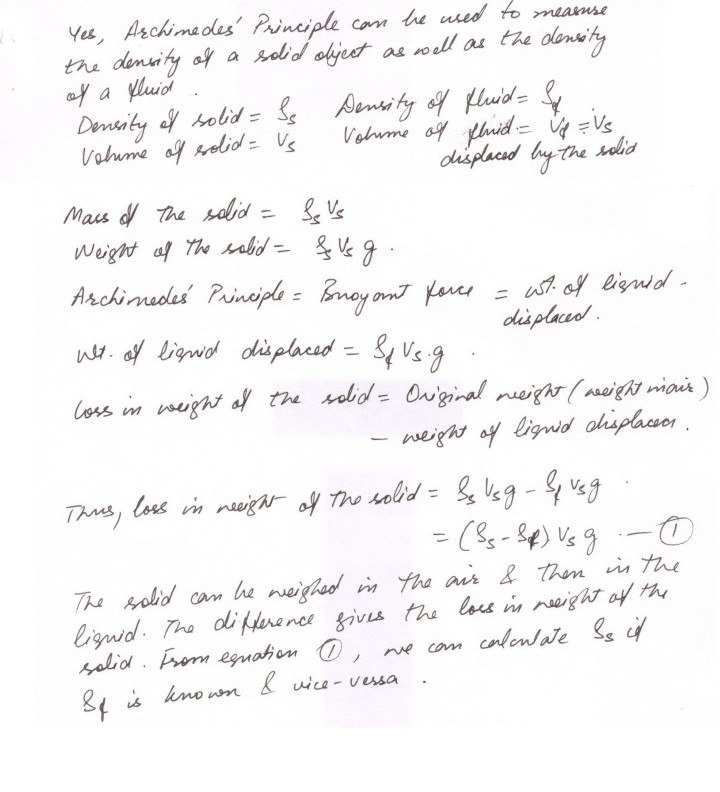| Q.
A
volume of 8 liters of gas has a pressure of 50 kPa and a temp
of 27oC. a) If the pressure were increased to 300 kPa without changing he temperature what would be the resulting volume? V1 = 8 liters P1 = 50 kPa T1 = 27o C = 300 K If the temperature is constant, then pressure is inversely proportional to the volume ( Boyle’s Law) that is P a 1/V or PV = constant P1V1 = P2V2 P2 = 300 kPa 50 x 103 x 8 = 300 x 103 x V2 V2 = (50 x 103 x 8)/(300 x 103) = 1.33 liters b) If the temperature was raised to 627o C while maintaining the original pressure, what would be the final volume? If the pressure is kept constant, then volume is directly proportional to temperature (Charle’s Law) that is V a T or V/T = constant V1 / T1 = V2 / T2 T2 = 627o C = 900K 8 / 300 = V2 / 900 V2 = (900 x 8)/300 = 24 liters c) What would be the resulting volume if the temperature was raised to 627oC and the pressure increased to 300 kPa simultaneously? P1V1/T1 = P2V2/T2 Now T2 = 627oC = 900 K and P2 = 300 x 103 Pa (50 x 103 x 8)/300 = (300 x 103 x V2)/900 V2 = (50 103 x 8 x 900)/(300 x 300 x 103) = 4 liters |
Q. A cord is 5.71e+1 meters long and 1.56 mm in diameter. When it supports a 1.41 kg load it stretches 3.50 cm. What is the Young’s modulus of the cord’s material?
A.
length l = 5.71 x 10 m = 57.1 m
d = 1.56 mm = 1.56 x 10-3 m
r = 0.78 x 10-3m
m = 1.41 kg
Increase in length ?l = 3.5 x 10-2 m
Area of cross section A = p (0.78 x 10 -3)2 m2
=1.91 x 10-6 m2
Young’s modulus Y = (F/A)/(?l/l) = stress / strain = F l /A ?l
where F=mg=1.41 x 9.8 = 13.82
Y = (13.82 x 57.1)/(1.91 x 10-6 x 3.5 x -2) = 11.8 x 109 N/m2
Can Archimedes principle be used to measure the density of a solid object? Can it be applied to the problem of measuring the density of a fluid? Write an equation that will handle these two problems.
